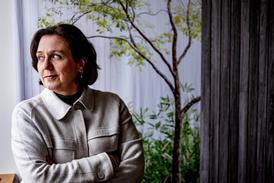To measure on a complex mixture, it first must be pretreated and its components separated from each other. Developments over the last 20 years in mass spectrometry may combine these steps, but quantitative measurements remain difficult without prior separation. ‘Try to determine the sugar content in pea soup with MS. You cannot do that without good sample preparation and separation’, says prof.dr.ir. Peter Schoenmakers.
Schoenmakers is professor at the University of Amsterdam and his research is focused on the analysis of chemical compounds and mixtures and in particular on analytical separation methods. He is one of the pioneers of two-dimensional gas and liquid chromatography. ‘We focus on improving chromatographic methods, for example towards multi-dimensional methods and we invent completely new methods.’
‘We are actually a kind of sample preparators, but very good ones. The prepared samples allow the spectrometrists to take good measurements. However, the dividing line between what is sample preparation and what is a measurement is not very clear’, says Schoenmakers. ‘Whatever the case, ultimately we need each other for the best results.’
‘The great thing about the analytical chemistry profession is that you get to talk to so many different people from various disciplines who come up with questions’, says Schoenmakers. ‘And we look for solutions for these problems, with our team members, each with their own expertise. The questions can come from forensic research, food production, pharmaceutical production, separation processes in industry, environmental monitoring, etc.’
Light sensitivity
One of Schoenmakers’ recent PhD students conducted research into light sensitivity of materials in art. It appeared that paintings from Van Gogh’s period (19th century) are much more light-sensitive than paintings from Rembrandt’s (17th century) period. When Van Gogh painted, synthetic dyes came onto the market. They were beautiful and cheap and Van Gogh did not have that much money, but unfortunately he did not know that the dyes were very light sensitive and discolored over time. By developing new methods (LC, MS, automation), aging can be efficiently studied.
The technical developments that Schoenmakers and his team come up with are often useful for various purposes. For example, preserving color is also important in the food industry: a yellow sauce that turns brown after a week on the shelf is not attractive to consumers. In water purification, aging is important, but in a different way. For example, ozone and light are used there to deliberately age the contaminants in the water.
Polymers
Schoenmakers also focuses on the properties of large molecules, such as polymers (plastics). ‘Making the connection between the chemical structure and the properties of the polymer is very important to obtain the desired properties of substances to be developed’, he says. For example, car coating must be glossy and scratch-resistant, but not reflective, and it must not contain bubbles. Paint on bridges must be able to withstand expansion and contraction at different temperatures.
In addition to the active substance, medicines often contain an excipient, such as modified natural cellulose (cellulose ether monomers). The excipient must have a certain dissolution rate and the correct rate of release into the human body. Cellulose ethers have very long chains, but the derivatization is not evenly distributed over the chain. This affects the properties. ‘Therefore, an innovative method is needed to map the structure of the chains. We collaborate a lot with the VU in this field.’
Education
Educational development is also of paramount importance to Schoenmakers. He is director of education at COAST (Top Institute for Comprehensive Analytical Science and Technology), which he co-founded in 2011. Within COAST, programs have been set up for good students (HBO and master) to train them in areas of analytical chemistry that industry and business need, but which are not covered by the university curriculum. This is financed by the industry. ’On Saturdays people from companies come to the classroom and talk about their work and what their big questions are. It is a very stimulating environment, because there is a lot of interaction, ideas are generated and students discover what could be an interesting PhD position or employer.
Even though Schoenmakers has retired since 2022, he is still fully engaged. ‘I don’t do everything anymore, but I especially try to invest a lot of time in young people. Ultimately, they have to take over.’
Practical information
Prof. dr. Peter Schoenmakers (University of Amsterdam) slot keynote speaker at Analytical Solutions. Title lecture: Preparation or separation
Analytical Solutions, the new congress during Lab Technology 2024, is all about Inventing the Future of Analytical Sciences. The slot keynote speaker of the Congress Analytical Solutions will be Em. Prof. Dr. Ir. P.J. (Peter) Schoenmakers. Schoenmakers is a em. professor at the University of Amsterdam and a member of the Centre for Analytical Sciences Amsterdam.
28 mei, Reehorst Ede
15:30 – 16:05
Theater Azure















